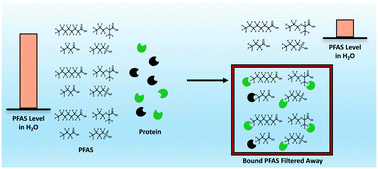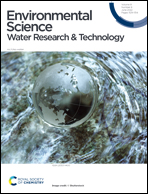Proteins as adsorbents for PFAS removal from water†
Abstract
As industries replace perfluorooctanoic acid (PFOA) and perfluorooctanoic sulfonic acid (PFOS) with short-chain perfluoroalkyl substances (PFAS), these more water-soluble short-chain compounds are emerging as persistent environmental contaminants. Like PFOA and PFOS, health effects on humans and wildlife also occur with these industrial alternatives. However, their removal from water is more challenging due to their increased hydrophilicity. Herein, we describe a material discovery approach using commercially available proteins, molecular weight cutoff (MWCO) filter devices, and liquid chromatography mass spectrometry (LCMS) to identify proteins capable of extracting shorter chain compounds. Depletion with PFOA was first attempted to establish a reliable screening method. The method developed identified proteins that could deplete hexafluoropropylene oxide dimer acid (HPFO-DA), perfluorobutyric acid (PFBA), and perfluoro butane sulfonic acid (PFBS) from water. Bovine serum albumin (BSA) and lysozyme performed the best at 84–99% removal of PFOA, HPFO-DA, PFBA, and PFBS from relevant water matrices with starting concentrations of 250 ppb. In addition to identifying new candidates for the removal of PFAS, this approach allowed for comparative protein analysis to arrive at protein properties contributing to PFAS binding.

- This article is part of the themed collection: PFAS: cleaning up drinking water


 Please wait while we load your content...
Please wait while we load your content...